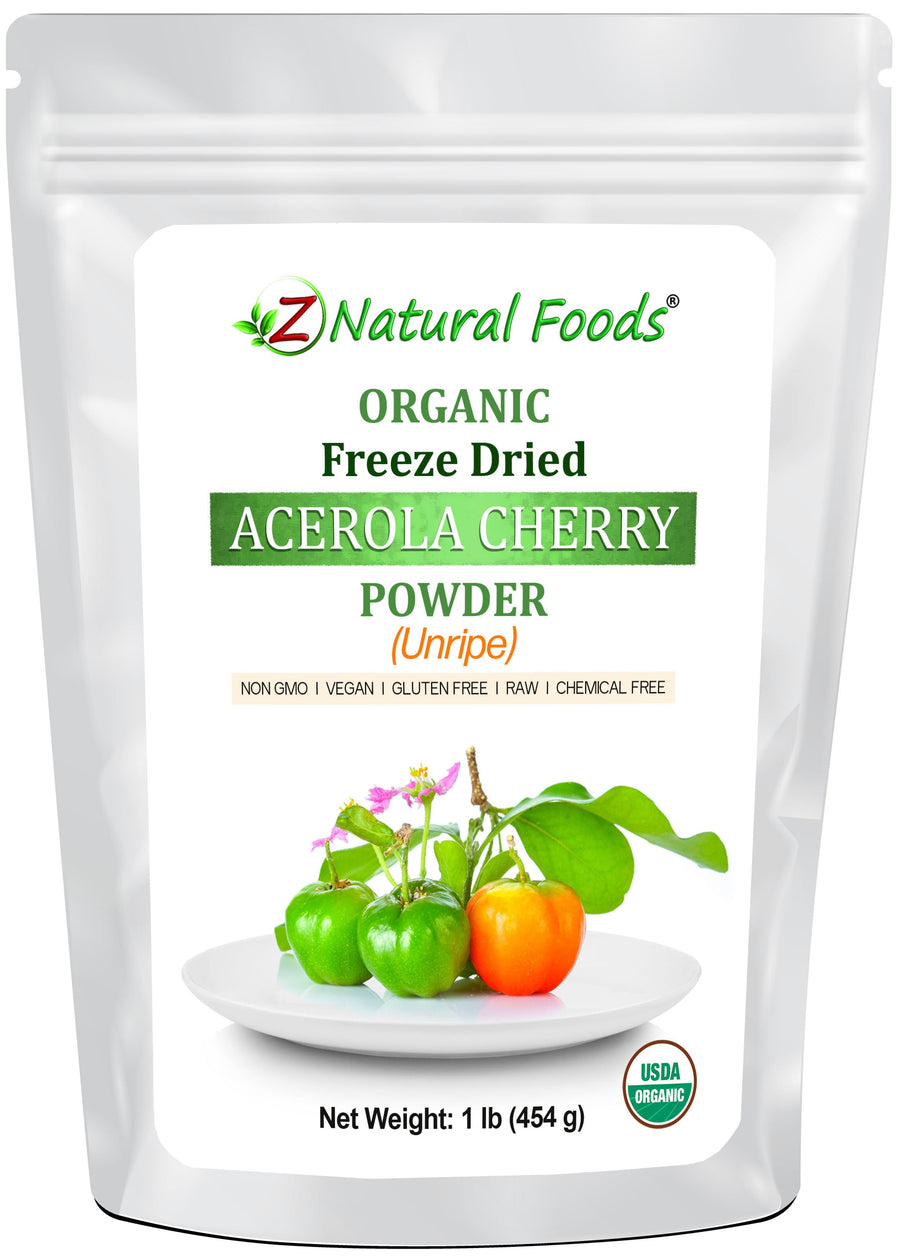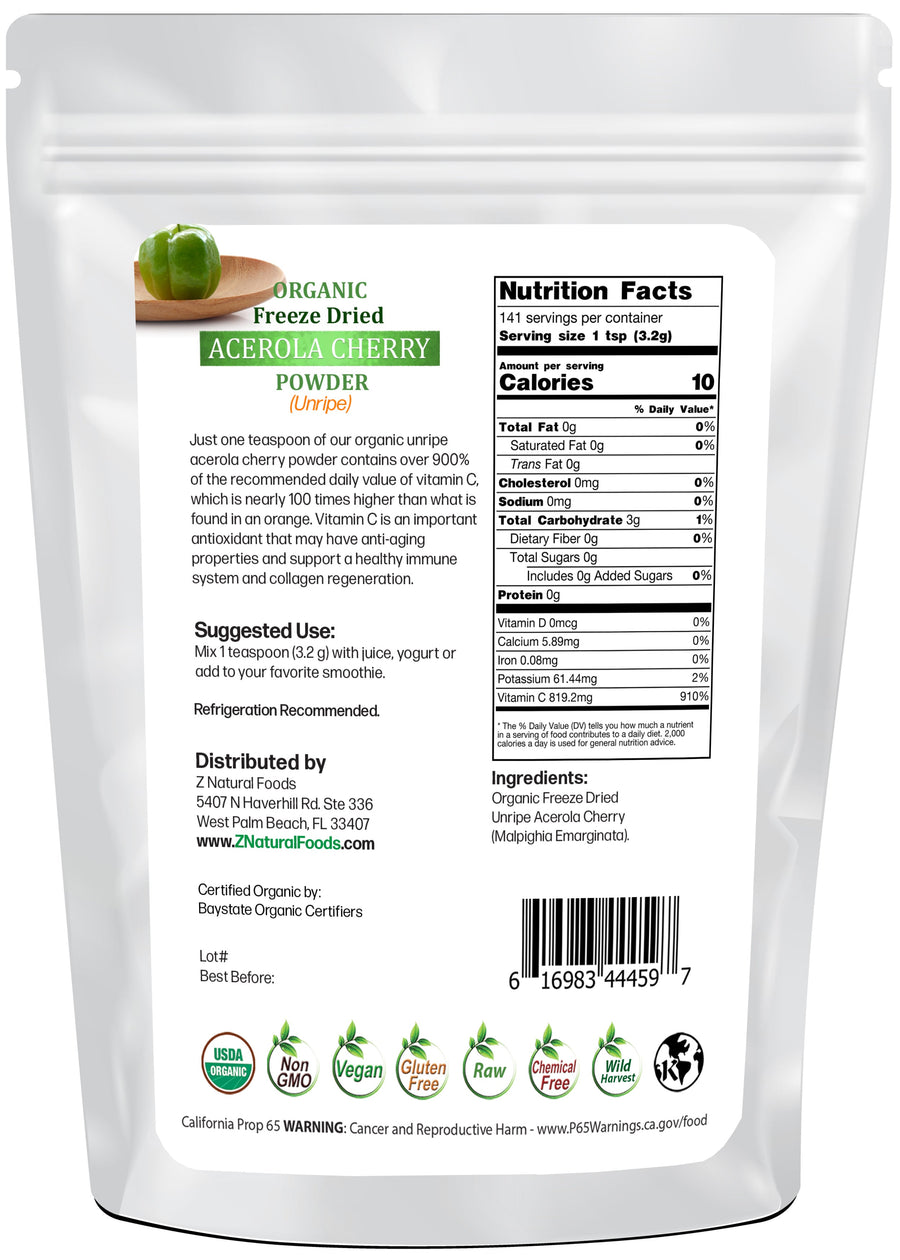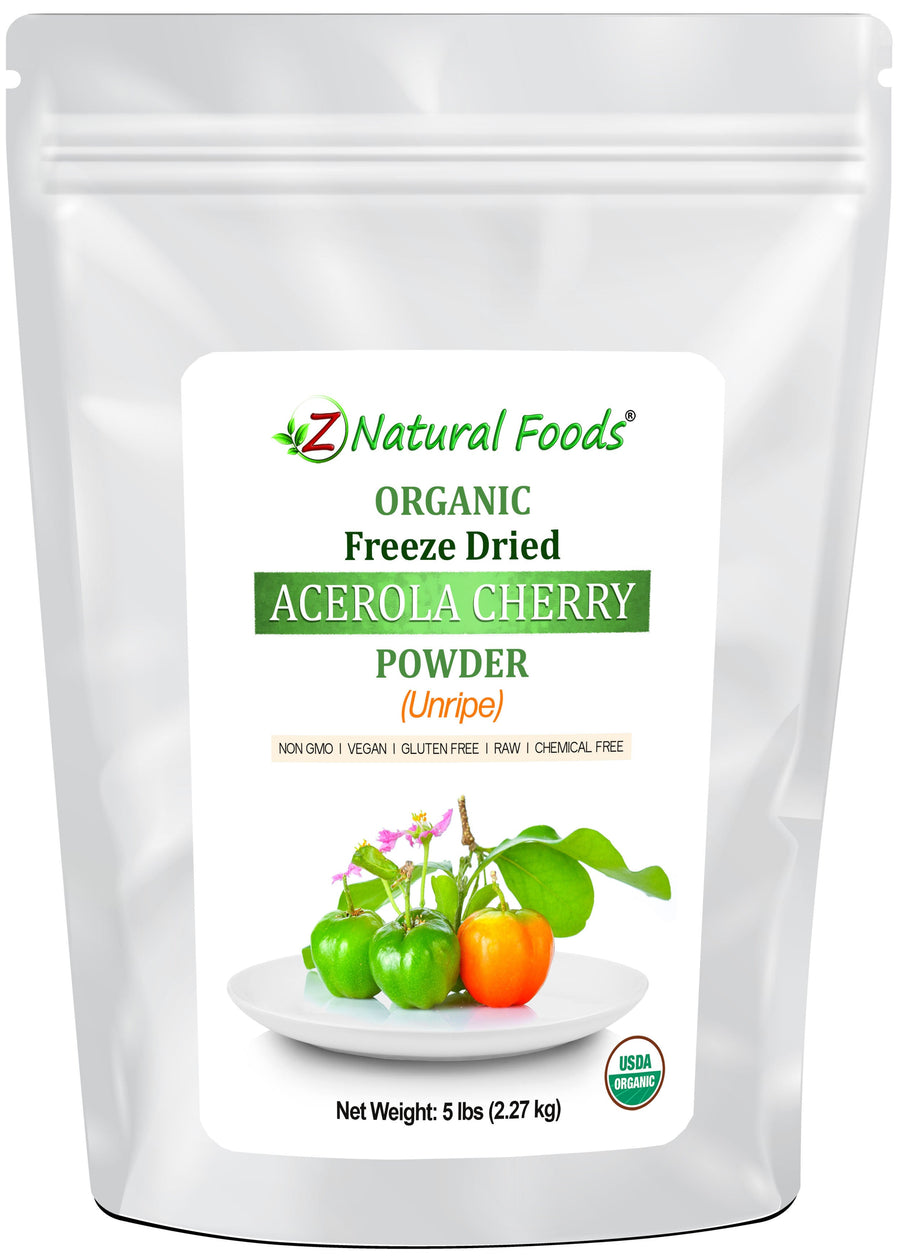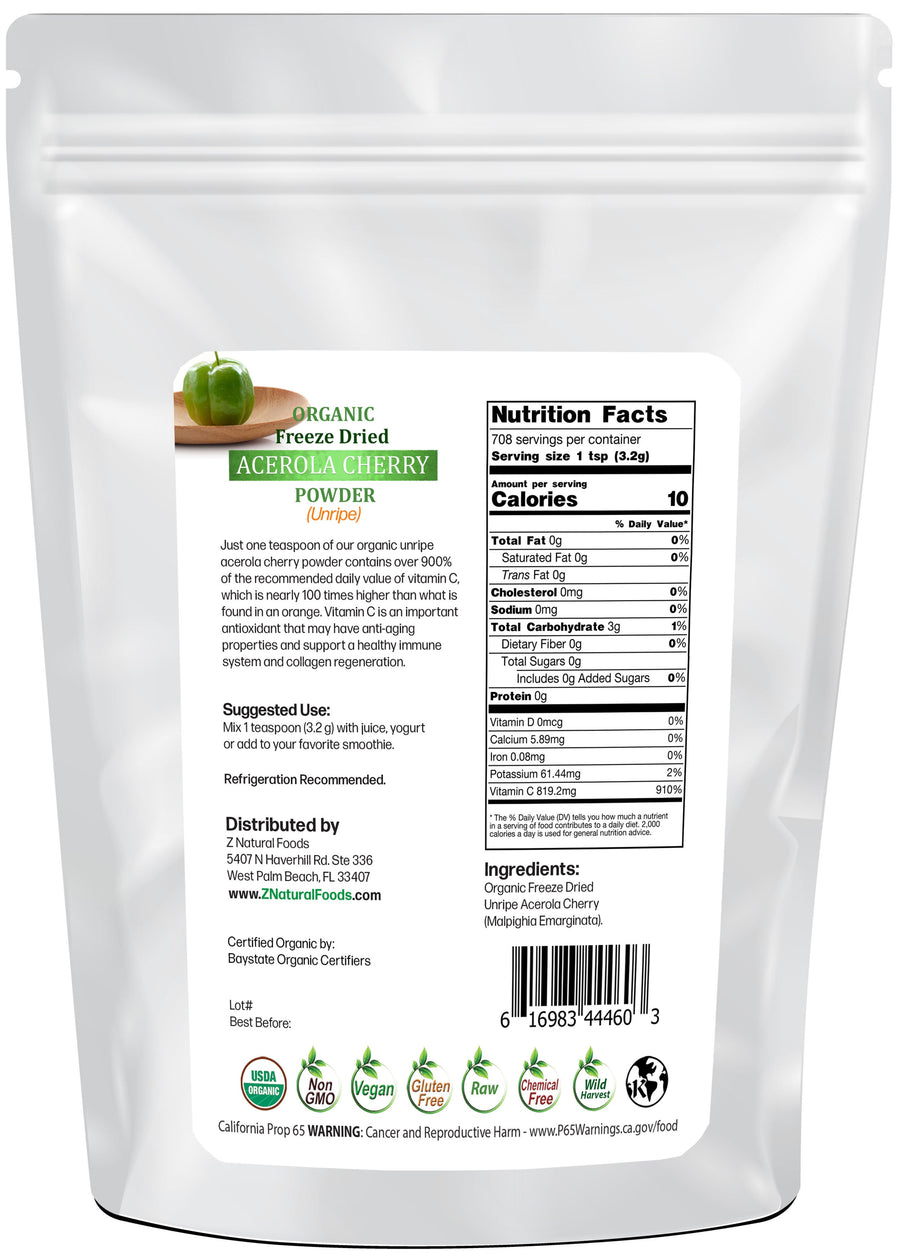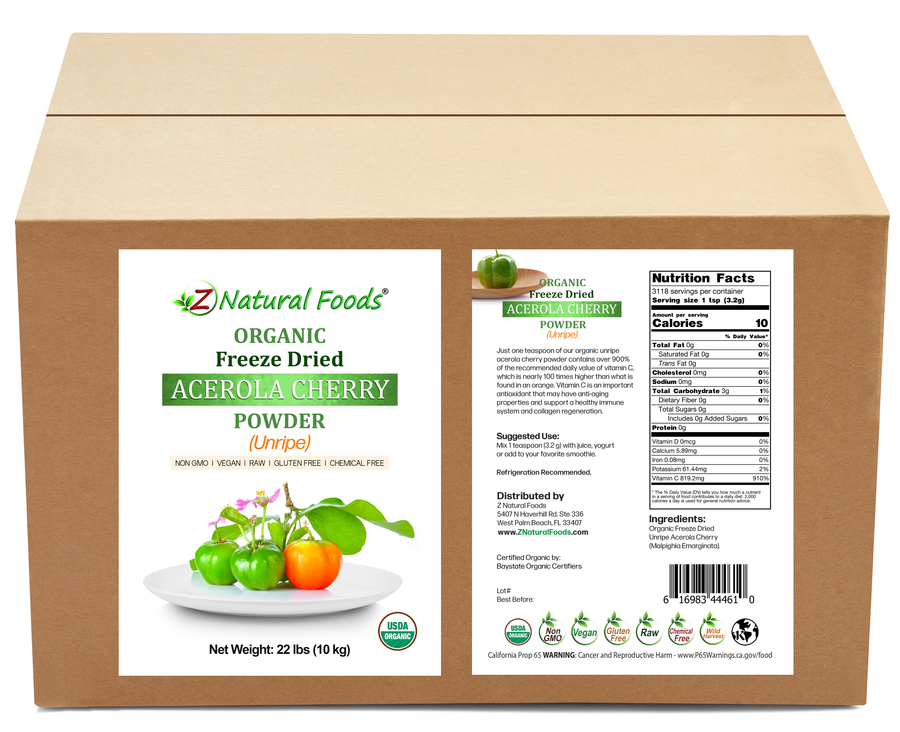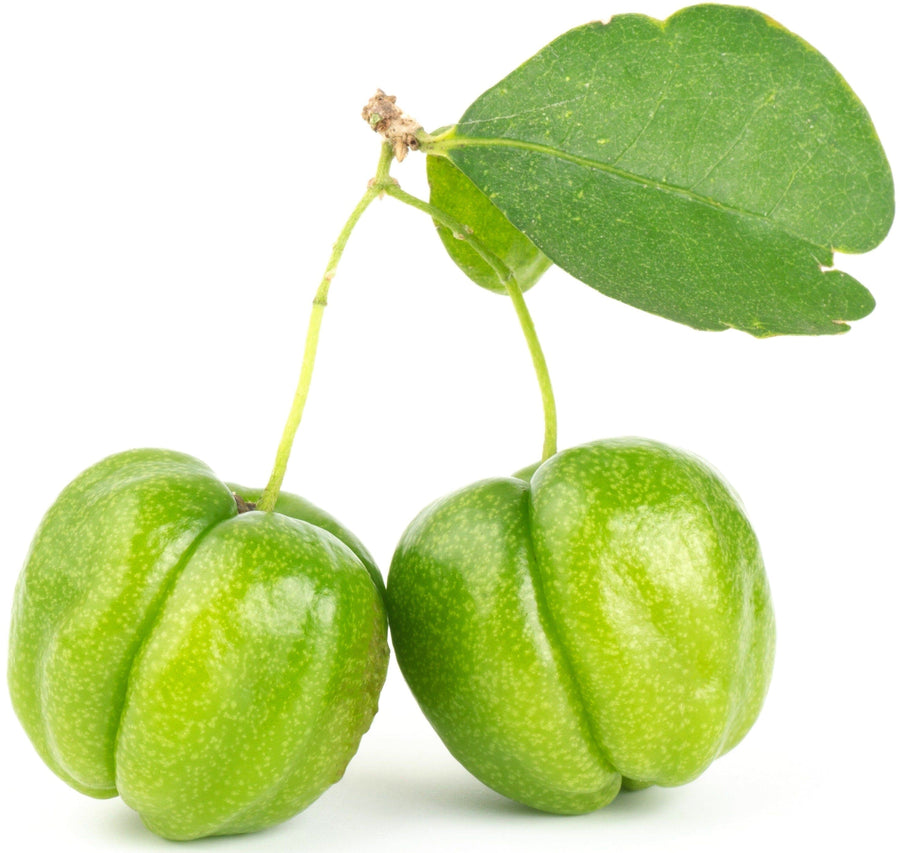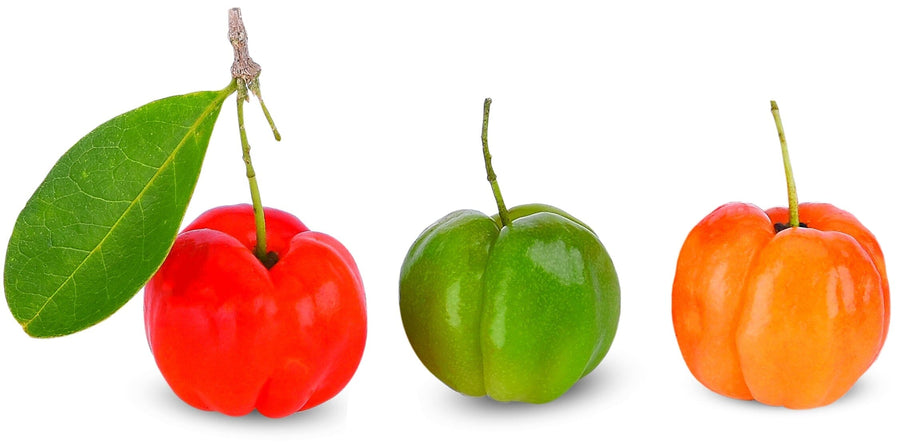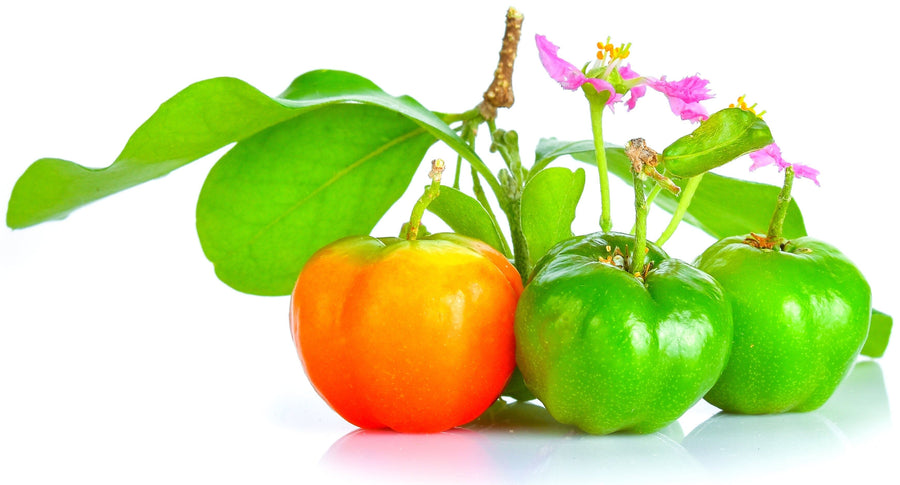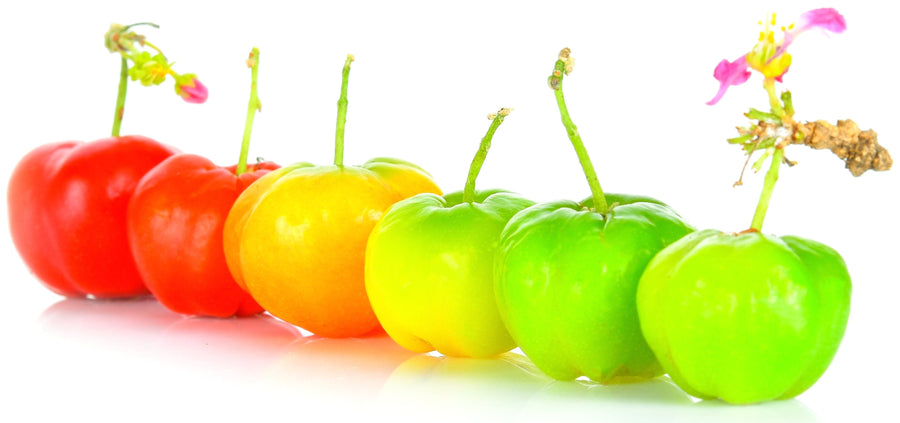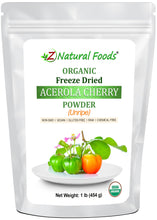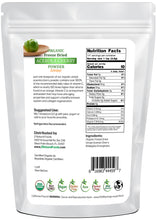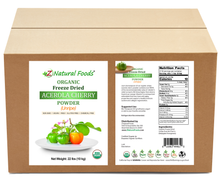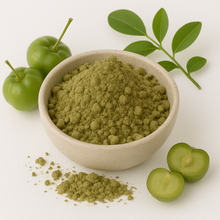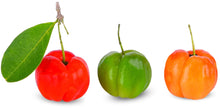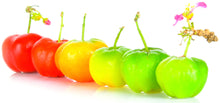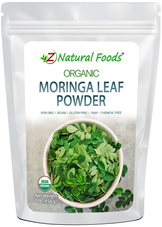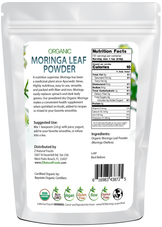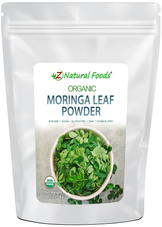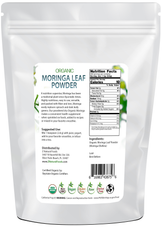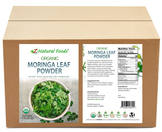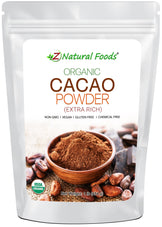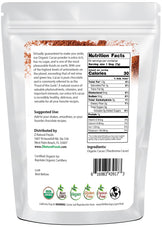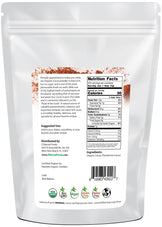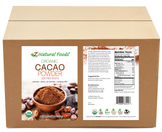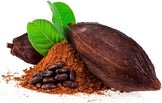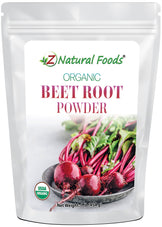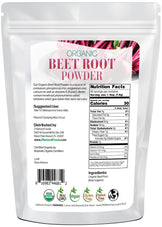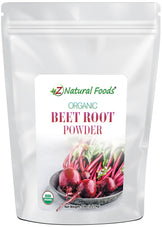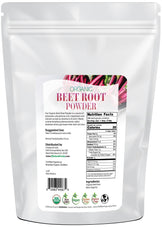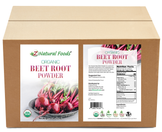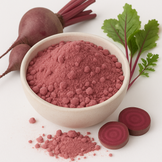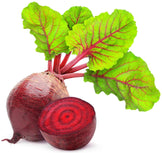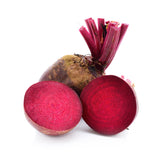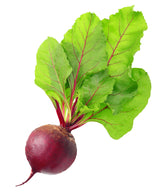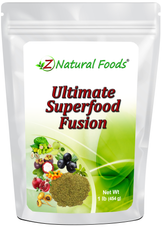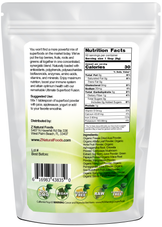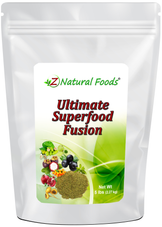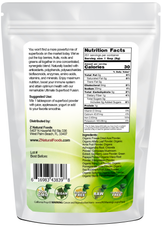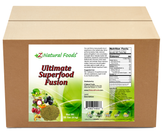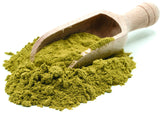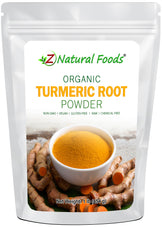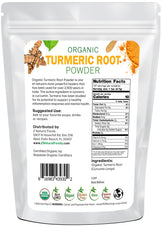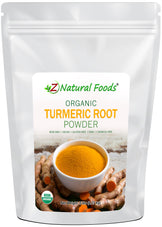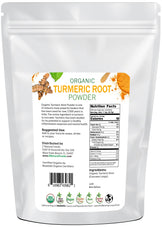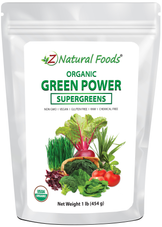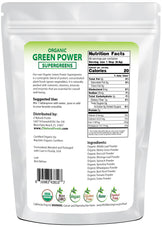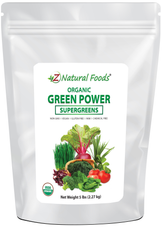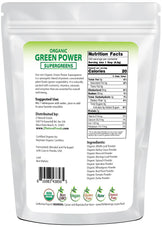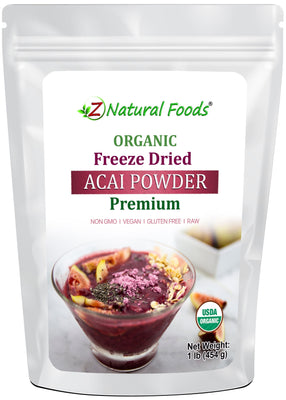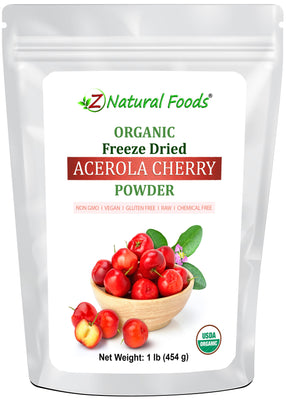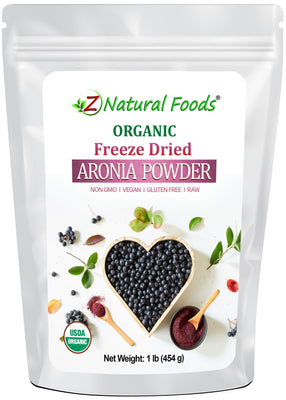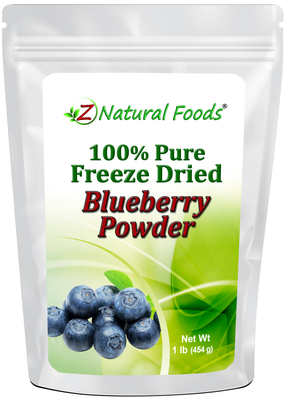About Product
Unripe Acerola Cherry Powder originates from South and Central America and the Caribbean, where the fruit has long been valued for its unique qualities. The unripe acerola cherry is a small, bright red fruit naturally high in vitamin C and other plant compounds. Once dried and ground into a fine powder, it can be easily added to smoothies, beverages, and culinary recipes. Its vibrant flavor and nutrient profile make it a versatile ingredient in functional foods.
Some research suggests that Unripe Acerola Cherries may contain the following constituents:
- Anthocyanins: Pelargonidin, Cyanidin
- Flavones: Apigenin, Luteolin
- Flavonols: Kaempferol, Myricetin, Quercetin
- Lipids: EPA, DPA, DHA
- Vitamins: Vitamin C, Thiamin, Riboflavin, Niacin, Pantothenic Acid, Vitamin B-6, Folate, Folate DFE, Vitamin B-12, Vitamin A RAE, Retinol, Vitamin A IU
- Minerals: Magnesium, Phosphorus, Zinc, Copper, Selenium
Taste, smell, texture, and color may vary from batch to batch:
Due to its nature, this powder tends to clump. If clumping occurs, lay the bag on a flat surface and place a towel over the bag. Then pound on the bag until the clumps break up. The towel will help protect the bag from damage. To further reduce clumping, push as much air as possible before sealing the pouch and storing it in the refrigerator or freezer.
Suggested Use: Mix one teaspoon with juice and yogurt, or add to your favorite smoothie.
Mixing suggestion: Increase flavor and nutritional profile, combined with our organic Camu and Rosehip powders for a high test vitamin c.
Miscellaneous Facts about our unripe, organic, wildcrafted, raw, freeze-dried Acerola Cherry Powder
Certifications: Certified USDA Organic.
Ingredients: Raw Unripe Green Acerola Cherry Fruit
Parts Used: Whole Acerola, no seed.
Botanical Name: Malpighia Emarginata.
Other Names: Barbados Cherry, Antilles Cherry, West Indian Cherry, Wild Crape Myrtle, Puerto Rican Cherry.
Origin: Wildcrafted and Freeze-Dried in Brazil. Packaged with care in Florida, USA.
* Product packaging, pictures, and origin may vary.
Sources & References
1. Uchida E, Kondo Y, Amano A, et al. Absorption and excretion of ascorbic acid alone and in Acerola (Malpighia emarginata) juice: comparison in healthy Japanese subjects. Biol Pharm Bull. 2011;34(11):1744-1747. doi:10.1248/bpb.34.1744
2. Lannes SC, Medeiros VL, Lapa FS. Contribution to the study of the nutritional value of acerola (Malpighia emarginata). J Food Sci. 2011;76(2):C298-C302. doi:10.1111/j.1750-3841.2010.01968.x
3. Institute of Medicine (US) Panel on Dietary Antioxidants and Related Compounds. Dietary Reference Intakes for Vitamin C, Vitamin E, Selenium, and Carotenoids. Washington (DC): National Academies Press (US); 2000.
4. Alves RE, Filgueira HA, Menezes JB. Acerola: characterization, pre and postharvest conservation. Embrapa Agroindústria Tropical-Circular Técnica (INFOTECA-E). 2002.
5. Moura CF, Sampaio KL, Bezerra MA, Alves RE. Acerola: postharvest quality maintenance of the fruit. Revista Brasileira de Fruticultura. 2017;39(3). doi:10.1590/0100-2945201749
6. Marques LG, Silveira AM, Freire JT. Freeze drying characteristics of acerola (Malpighia punicifolia L.). J Food Eng. 2006;77(4):910-914. doi:10.1016/j.jfoodeng.2005.08.014
7. Instituto Brasileiro de Geografia e Estatística. Levantamento Sistemático da Produção Agrícola. Rio de Janeiro: IBGE; 2017.
8. Hanamura T, Hagiwara T, Kawagishi H. Structural and functional characterization of polyphenols isolated from acerola (Malpighia emarginata DC.) fruit. Biosci Biotechnol Biochem. 2005;69(2):280-286. doi:10.1271/bbb.69.280
9. Kim DO, Jeong SW, Lee CY. Antioxidant capacity of phenolic phytochemicals from various cultivars of plums. Food Chem. 2003;81(3):321-326. doi:10.1016/S0308-8146(02)00423-5
10. Parry J, Su L, Luther M, et al. Chemical compositions, antioxidant capacities, and antiproliferative activities of selected fruit seed flours. J Agric Food Chem. 2006;54(11):3773-3778. doi:10.1021/jf060325k
11. Chen H, Zhang M, Qu Z, Xie B. Composition and tissue structure of cherry (Malpighia emarginata) harvested at different ripening times. J Sci Food Agric. 2007;87(12):2299-2306. doi:10.1002/jsfa.2986
12. Gonzalez R, Ballester I, Lopez-Posadas R, et al. Effects of flavonoids and other polyphenols on inflammation. Crit Rev Food Sci Nutr. 2011;51(4):331-362. doi:10.1080/10408391003674848
13. Frei B, Birlouez-Aragon I, Lykkesfeldt J. Authors' perspective: What is the optimum intake of vitamin C in humans? Crit Rev Food Sci Nut 2012;52(9):815-829. doi:10.1080/10408398.2011.649149
14. Tsao R, Yang R. Optimization of a new mobile phase to know the complex and real polyphenolic composition: towards a total phenolic index using high-performance liquid chromatography. J Chromatogr A. 2003;1018(1):29-40. doi:10.1016/j.chroma.2003.08.034
15. Mezadri T, Villano D, Fernández-Pachón MS, García-Parrilla MC, Troncoso AM. Antioxidant compounds and antioxidant activity in acerola (Malpighia emarginata DC.) fruits and derivatives. J Food Compos Anal. 2008;21(4):282-290. doi:10.1016/j.jfca.2007.11.005
16. de Moura NF, Ribeiro AB, de Almeida SM, Prado GM, Toyama DO, Beriam LO, Romoff P, Fávero OA, Lago JH. Evaluation of the analgesic and anti-inflammatory effects of the acetone extract of the stem bark of Strychnos pseudoquina. Journal of Ethnopharmacology. 2009;123(2):275-280. doi:10.1016/j.jep.2009.03.010
17. Maia JG, de Andrade EH. Database of the Amazon aromatic plants and their essential oils. Quim Nova. 2009;32(3):595-622. doi:10.1590/S0100-40422009000300002
18. Vendramini T, Tugo L (2000). "Chemical Composition of acerola fruit (Malpighia punicifolia L.) at three stage of maturity". The Food Chemistry 71: 195"“198.
19. Nugent, Jeff; Julia Boniface (2004). Permaculture Plants: a Selection (2 ed.). Chelsea Green Publishing. p. 63. ISBN 978-1-85623-029-2.
20. Acerola, an untapped functional superfruit: a review on latest frontiers - https://www.ncbi.nlm.nih.gov/pmc/articles/PMC6098779/
21. Kuskoski EM, Asuero AG, Morales MT, Fett R (2006). "Wild fruits and pulps of frozen fruits: antioxidant activity, polyphenols and anthocyanins". Cienc Rural 36 (4 (July/Aug)).
22. "Absolut unveils Los Angeles "˜flavour"'". POPSOP.com. 2008-07-24.
23. http://www.naturalnews.com/043134_vitamin_C_intravenous_infusions_COPD.html
24. http://www.eurekalert.org/pub_releases/2013-11/aps-vcc110713.php
25. http://ajpregu.physiology.org/content/ajpregu/early/2013/09/20/ajpregu.00360.2013.full.pdf
26. http://www.vitamincfoundation.org/NaturalC.pdf
27. http://lpi.oregonstate.edu/infocenter/vitamins/vitaminC/vitCform.html
28. Gillman, Edward F. (October 1999). "Malpighia glabra". Cooperative Extension Services Institute of Food and Agricultural Sciences. University of Florida. Retrieved 2009-12-16.
29. http://www.ars-grin.gov/cgi-bin/duke/farmacy2.pl
30. https://ndb.nal.usda.gov/ndb/foods/show/2120
31. Ooi, P.A.C.; A. Winotai; Jorge E. Pea (2002). "Pests of Minor Tropical Fruits". In Jorge E. Peña; Jennifer L. Sharp; M. Wysoki. Tropical Fruit Pests and Pollinators: Biology, Economic Importance, Natural Enemies, and Control. CABI. p. 326. ISBN 978-0-85199-434-5.
32. "Prescription for Herbal Healing"; Phyllis A. Balch; 2002.
33. "Brown-banded Skipper Timochares ruptifasciata (Plötz, 1884)". Butterflies and Moths of North America. Retrieved 2010-03-30.
34. "Florida Duskywing Ephyriades brunnea (Herrich-Schäffer, 1865)". Butterflies and Moths of North America. Retrieved 2010-03-30.
35. "White-patched Skipper Chiomara georgina (Reakirt, 1868)". Butterflies and Moths of North America. Retrieved 2010-03-30.
36. Corren J, Lemay M, Lin Y, Rozga L, Randolph RK.,"Clinical and biochemical effects of a combination botanical product (ClearGuardTM) for allergy: a pilot randomized double-blind placebo-controlled trial." Nutr J. 2008 Jul 14;7(1):20
37. Janick, Jules; Robert E. Paull (2008). The Encyclopedia of Fruit & Nuts. CABI. p. 462. ISBN 978-0-85199-638-7.
38. "Malpighia glabra L.". Germplasm Resources Information Network. United States Department of Agriculture. 2007-02-11. Retrieved 2009-12-16.
39. "Malpighia emarginata DC.". Germplasm Resources Information Network. United States Department of Agriculture. 1998-05-18. Retrieved 2010-02-02.
40. Johnson, Paul D. (2003). "Acerola (Malpighia glabra L., M. punicifolia M. emarginata DC.) Agriculture, Production, and Nutrition". In Artemis P. Simopoulos; C. Gopalan. Plants in Human Health and Nutrition Policy 91. Karger Publishers. pp. 63"“74. ISBN 978-3-8055-7554-6.
41. "Malpighia glabra L. wild crapemyrtle". PLANTS Database. United States Department of Agriculture. Retrieved 2009-10-17.
42. Mezadri T, VillanËœo M, Fernandez-Pachon M, Garcia-Parrilla M, Troncoso A (2008). "Antioxidant compounds and antioxidant activity in acerola(Malpighia emarginata DC.) fruits and derivatives". Journal of Food Composition and Analysis 21 (4): 282"“290.
43. Assis S, Fernandes F, Martins A, Oliveira O (2008). "Acerola: importance, culture, conditions, production and biochemical aspects". Fruits 63: 93"“101.
44. "Barbados Cherry, Mexican Myrtle, Manzanita, Cerez, Huacacote, Wild Crepe Myrtle, Manyonita, Cerezo de Jamaica, Cerezo de Castillo, Pallo de Gallina, Escobillo, Chia, Arrayncito, Xocat, Xocatatl Malpighia glabra". Benny Simpson's Texas Native Shrubs. Texas A&M University. Retrieved 2009-12-15.
45. Hanelt, Peter (2001). Mansfeld's Encyclopedia of Agricultural and Horticultural Crops (Except Ornamentals). Springer. pp. 1127"“1128. ISBN 978-3-540-41017-1.
46. "Malpighia glabra L. Malpighiaceae" (PDF). Agroforestree Database 4.0. World Agroforestry Centre. 2009. Retrieved 2009-12-16.
47. National Geographic (2008). Edible: An Illustrated Guide to the World's Food Plants. National Geographic Books. p. 106. ISBN 978-1-4262-0372-5.
48. Vendramini T, Tugo L (2000). "Chemical Composition of acerola fruit (Malpighia punicifolia L.) at three stage of maturity". The Food Chemistry 71: 195"198.
49. Clein N (1956). "Acerola juice" The richest known source of Vitamin C: A clinical study in infants". The Journal of pediatrics 48 (2): 140"145.
50. Harvard Medical School Clinical Research Programs. (2021). Nutrient Preservation in Freeze-Drying.
51. World Health Organization (WHO). (2020). Nutrient Retention in Food Processing.
52. United States Department of Agriculture (USDA). (2021). Nutritional Guidelines.
53. National Institutes of Health (NIH). (2020). Vitamin C in Fruits.
54. Ayurvedic Medicine from India. (2019). Traditional Harvesting Practices.
55. Traditional Chinese Medicine (TCM). (2020). Preservation Techniques in Traditional Medicine.
56. Eastern Herbalism Principles. (2018). Botanical Characteristics of Acerola.
57. Western Herbalism Principles. (2019). Acerola Tree Productivity.
58. Mayo Clinic Research Information Center. (2021). Antioxidants and Minerals in Acerola.
59. United States Food and Drug Administration (FDA). (2022). Health Benefits of Vitamins and Minerals.
60. Former Soviet Union Research. (2020). Ascorbic Acid Content in Acerola and Oranges.
61. World Health Organization (WHO). (2021). Vitamin C and Immune Function.
62. Harvard Medical School Clinical Research Programs. (2022). Health Benefits of Acerola Cherries.
63. National Institutes of Health (NIH). (2021). Bioactive Compounds in Acerola.
64. Ayurvedic Medicine from India. (2020). Antifungal Properties of Acerola.
65. Traditional Chinese Medicine (TCM). (2021). Skin Health and Acerola.
* Reviews & Success Stories Disclaimer
Product reviews solely reflect the views and opinions expressed by the contributors and not those of Z Natural Foods. Z Natural Foods does not verify or endorse any claims made in these reviews. Statements have not been evaluated by the FDA and are not intended to diagnose, treat, cure, or prevent any disease or health condition.REFERRAL PROGRAM
Share your personal link to your friends and welcome them with rewards. Claim yours when they make their first purchase.

GIVE
$10 off discount

GET
$10 off discount
